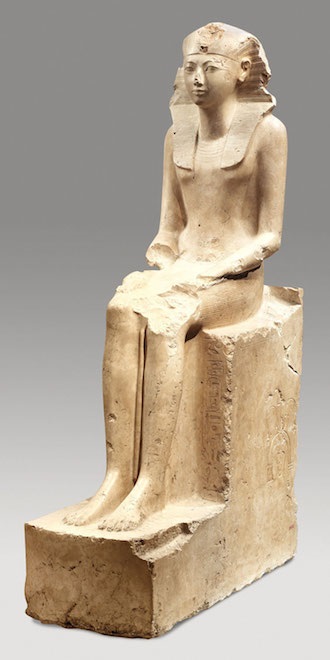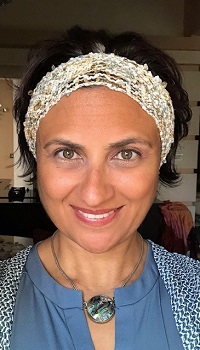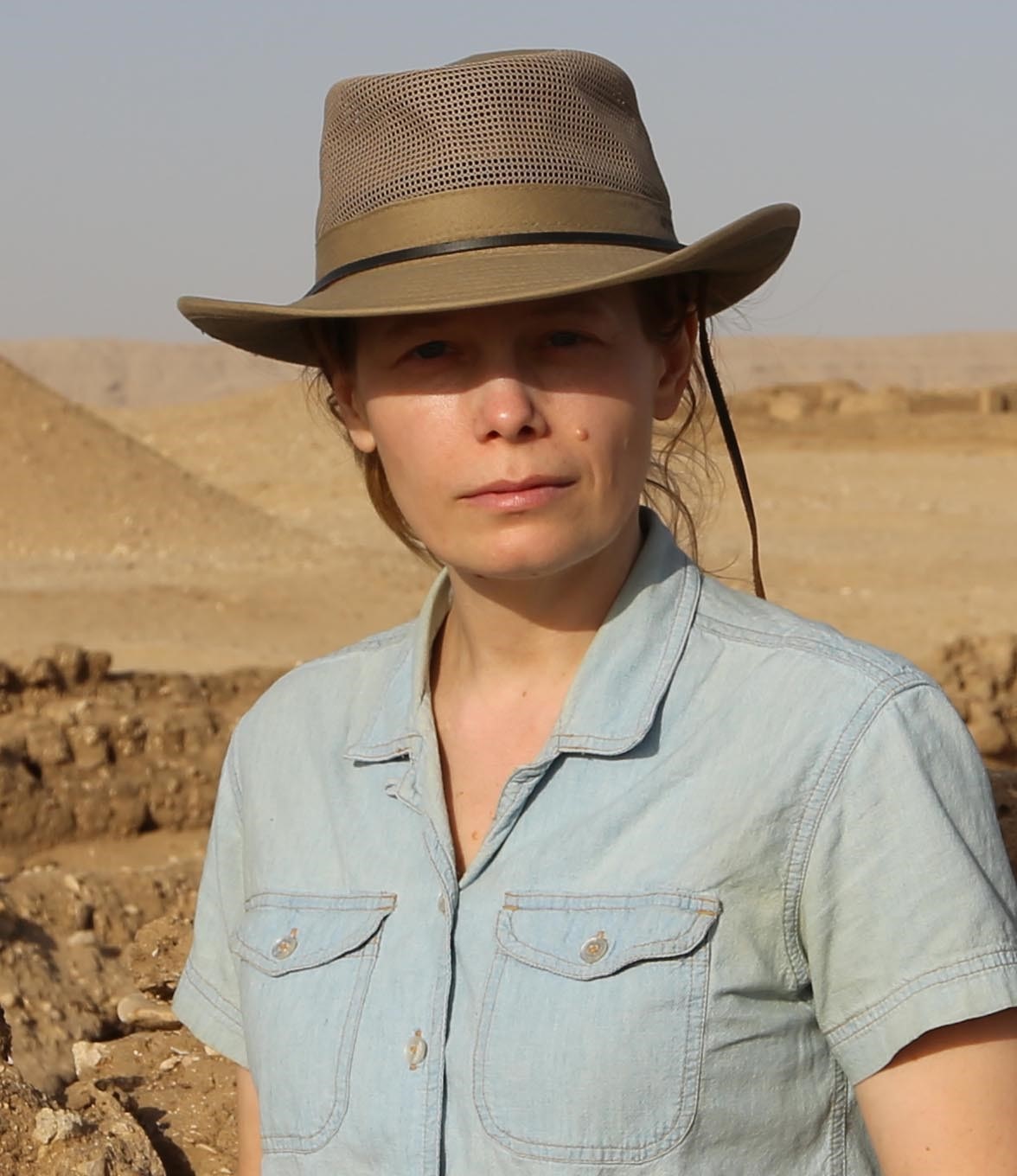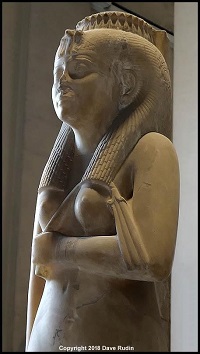Kingship in Ancient Egypt
Episodes 1-5
- September 3, 2021 5 Episodes
Episodes 1-5
If you enjoy the ARCE Podcast, consider supporting its production by making a donation.
In this episode:

Professor Miroslav Barta will be talking about kingship during the Egyptian Old Kingdom. He will introduce us to the most prominent roles of an Egyptian king, the position of the king within the hierarchy of being, the role of the elite in the perpetuation and upkeep of kingship, and the role played by the king in the decline of the state at the end of the 6th Dynasty. He will also talk to us about who built the pyramids and will introduce us to the lesser-known pyramids of the 5th and 6th Dynasties.
In conversation with Dr. Yasmin El Shazly, ARCE’s Deputy Director for Research and Programs
About Miroslav Barta:
Barta is a Czech Egyptologist and archaeologist who studied for his Ph.D. in both Prague and Hamburg between 1994 and 1997 and has been professor of Egyptology at Charles University, Prague since 2009. In 2011 he was appointed Director of the Czech excavations at the Abusir Pyramid Field. Since 2016 he has been the director of the Czech Institute of Egyptology in Prague. Professor Barta specializes in the archaeology and history of the third millennium B.C. He authored and co-authored more than twenty monographs and collective volumes and over a hundred scientific papers.
If you enjoy the ARCE Podcast, consider supporting its production by making a donation.
In this episode:
Dr. Stephen Harvey will be talking about Egyptian kingship from the Middle Kingdom to the beginning of the New Kingdom. He will discuss the lessons learnt by the kings of the Middle Kingdom from the First Intermediate Period, and the changes they made to ensure that this fragmentation would not happen again; how the kings of the Middle Kingdom had themselves represented in art and literature and what this says about the concept of kingship during the Middle Kingdom; the differences between the pyramids of the Middle Kingdom and those of the Old Kingdom and the reasons behind them. He will also shed light on what happened to the power of the king at the end of the Middle Kingdom and during the Second Intermediate Period and how the Ahmosid line was honored in the Theban tombs of the New Kingdom and why.
In conversation with Dr. Yasmin El Shazly, ARCE’s Deputy Director for Research and Programs
About Steve Harvey:
Dr. Stephen Harvey has been Director of the Ahmose and Tetisheri Project, at Abydos in southern Egypt, since 1993. He received his Ph.D. in Egyptian Archaeology in 1998 from the University of Pennsylvania, and his B.A. in Archaeological Studies from Yale University in 1987. In addition to his extensive fieldwork at Abydos, Dr. Harvey has worked in Egypt at Giza and Memphis, as well as on archaeological projects in the United States, Syria, and Turkey.
Dr. Harvey has held teaching and curatorial positions at a number of leading Egyptological institutions such as the University of Chicago, the University of Memphis, and the Walters Art Museum in Baltimore, Maryland. He has appeared in numerous international television programs about ancient Egypt and has led many tours to Egypt over the last 20 years.
If you enjoy the ARCE Podcast, consider supporting its production by making a donation.
In this episode:
Professor Betsy Bryan will be talking about kingship and the distinguishing features of royal ideology during the Egyptian New Kingdom. She will explain the concept of the royal ka and how a usurper of the throne legitimized his/her rule. She will also discuss how the king was regarded as an intermediary between humans and the gods, but that there were some kings who seem to have had themselves deified, to become full gods, and were depicted worshiping their divine selves on their monuments, like Amenhotep III and Ramesses II. Who does she believe was the target audience for such scenes and what was the purpose behind them? She will also be discussing why some kings usurped the monuments of their predecessors and if the king was regarded as divine, why were their tombs robbed since antiquity? Professor Bryan will then shed light on what happens to the power of the king towards the end of the New Kingdom.
In conversation with Dr. Yasmin El Shazly, ARCE’s Deputy Director for Research and Programs
About Betsy Bryan:
Professor Betsy Bryan is the Alexander Badawy Professor of Egyptian Art and Archaeology at Johns Hopkins University. Her areas of specialization are art history, art, and archaeology of the New Kingdom. Her current fieldwork is on the temple complex of the goddess Mut at South Karnak, and her research focuses on defining the earliest forms of Mut of Isheru.
If you enjoy the ARCE Podcast, consider supporting its production by making a donation.
In this episode:

Dr. Mariam Ayad and Dr. Jacquelyn Williamson will discuss the status of women in ancient Egypt relative to their counterparts in other contemporary cultures and the level of objectivity of our views of ancient Egyptian culture and society. They will answer the questions of why Egyptian female rulers are referred to as “kings”, how did female pharaohs legitimize their rule, and did the ancient Egyptians really reject the idea of female rulers or are we imposing our modern views on an ancient culture? Ayad and Williamson will also ponder Hatshepsut’s ascent to the throne, her relationship with Thutmose III and his attempt to eradicate her memory after her death. They will also shed light on the fact that many scholars need to acknowledge that their views are often mere speculation and that we need to read history with a more critical eye.
In conversation with Dr. Yasmin El Shazly, ARCE’s Deputy Director for Research and Programs
About Mariam Ayad:

A graduate of The American University of Cairo’s Egyptology program, Ayad also obtained her MA in ancient near eastern civilizations, specializing in the Egyptian language and literature, with a minor in Egyptian archaeology at the University of Toronto in 1996, before accepting a fellowship to pursue her PhD in Egyptology at Brown University in the United States. Ayad returned to AUC after many years of studying and working abroad. Prior to her return, Ayad was a tenured associate professor of art history and Egyptology at the University of Memphis, in the United States, where she also served as an assistant director of the Institute of Egyptian Art and Archaeology from 2003 to 2010. At the University of Memphis, Ayad taught Middle and Late Egyptian grammar and Egyptian literature. At AUC, Ayad teaches a year-long course on Middle Egyptian grammar (Egyptian hieroglyphics) as well as graduate seminars on Egypt in the first millennium BC, Nubian cultures and society, and ancient Egyptian women in temple ritual. Ayad continues to serve as director of the Opening of the Mouth Epigraphic Project at the Tomb of Harwa (TT 37) in Luxor.
About Jacquelyn Williamson:

Dr. Jacquelyn Williamson is an Egyptologist, with a special focus on gender and religious power. Her book, Nefertiti’s Sun Temple: A New Cult Complex at Tell el-Amarna, part of Brill’s Harvard Egyptology Series, was published in September 2016. She is involved in the ongoing investigation of Kom el-Nana at Tell el-Amarna in Egypt, the site of a sun temple associated with Queen Nefertiti, which is the subject of her first book. She has been a member of several archaeological missions in Egypt and has worked in many museums including the Egyptian Museum in Cairo and the Harvard Semitic Museum, and has held teaching and research positions at UC Berkeley, Harvard University, and Brandeis University. Dr. Williamson teaches classes on the art and archaeology of the Ancient Mediterranean World.
In this episode:

Dr. Mariam Ayad and Dr. Jacquelyn Williamson will discuss the status of women in ancient Egypt relative to their counterparts in other contemporary cultures and the level of objectivity of our views of ancient Egyptian culture and society. They will answer the questions of why Egyptian female rulers are referred to as “kings”, how did female pharaohs legitimize their rule, and did the ancient Egyptians really reject the idea of female rulers or are we imposing our modern views on an ancient culture? Ayad and Williamson will also ponder Hatshepsut’s ascent to the throne, her relationship with Thutmose III and his attempt to eradicate her memory after her death. They will also shed light on the fact that many scholars need to acknowledge that their views are often mere speculation and that we need to read history with a more critical eye.
In conversation with Dr. Yasmin El Shazly, ARCE’s Deputy Director for Research and Programs
About Mariam Ayad:
A graduate of The American University of Cairo’s Egyptology program, Ayad also obtained her MA in ancient near eastern civilizations, specializing in the Egyptian language and literature, with a minor in Egyptian archaeology at the University of Toronto in 1996, before accepting a fellowship to pursue her PhD in Egyptology at Brown University in the United States. Ayad returned to AUC after many years of studying and working abroad. Prior to her return, Ayad was a tenured associate professor of art history and Egyptology at the University of Memphis, in the United States, where she also served as an assistant director of the Institute of Egyptian Art and Archaeology from 2003 to 2010. At the University of Memphis, Ayad taught Middle and Late Egyptian grammar and Egyptian literature. At AUC, Ayad teaches a year-long course on Middle Egyptian grammar (Egyptian hieroglyphics) as well as graduate seminars on Egypt in the first millennium BC, Nubian cultures and society, and ancient Egyptian women in temple ritual. Ayad continues to serve as director of the Opening of the Mouth Epigraphic Project at the Tomb of Harwa (TT 37) in Luxor.
About Jacquelyn Williamson:
Dr. Jacquelyn Williamson is an Egyptologist, with a special focus on gender and religious power. Her book, Nefertiti’s Sun Temple: A New Cult Complex at Tell el-Amarna, part of Brill’s Harvard Egyptology Series, was published in September 2016. She is involved in the ongoing investigation of Kom el-Nana at Tell el-Amarna in Egypt, the site of a sun temple associated with Queen Nefertiti, which is the subject of her first book. She has been a member of several archaeological missions in Egypt and has worked in many museums including the Egyptian Museum in Cairo and the Harvard Semitic Museum, and has held teaching and research positions at UC Berkeley, Harvard University, and Brandeis University. Dr. Williamson teaches classes on the art and archaeology of the Ancient Mediterranean World.